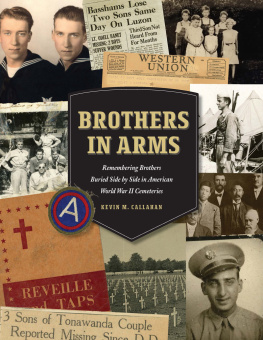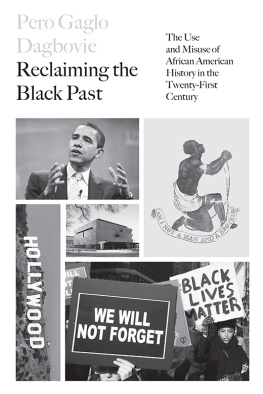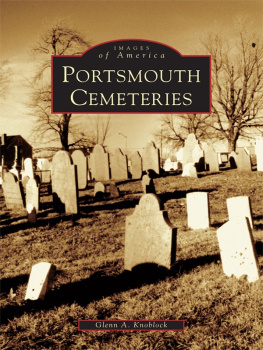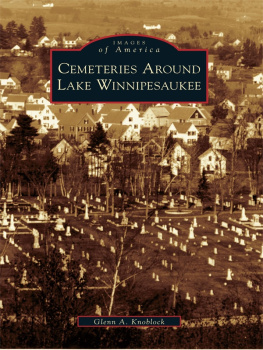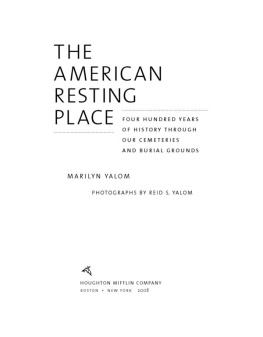University of Virginia Press
2014 by the Rector and Visitors of the University of Virginia
All rights reserved
Printed in the United States of America on acid-free paper
First published 2014
9 8 7 6 5 4 3 2 1
LIBRARY OF CONGRESS CATALOGING-IN-PUBLICATION DATA
Rainville, Lynn.
Hidden history : African American cemeteries in central Virginia / Lynn Rainville.
pages cm
Includes bibliographical references and index.
ISBN 978-0-8139-3534-8 (cloth : alk. paper) ISBN 978-0-8139-3535-5 (e-book)
1. African American cemeteriesVirginiaAlbemarle CountyHistory. 2. African American cemeteriesVirginiaAmherst CountyHistory. 3. African AmericansFuneral customs and ritesVirginiaAlbemarle CountyHistory. 4. African AmericansFuneral customs and ritesVirginiaAmherst CountyHistory. I. Title.
F232.A3R35 2014
393.93089'960730755482dc23
2013017583
Preface
In the spring of 2008 I received a series of phone calls and e-mails from an archaeologist who has spent dozens of hours mapping Virginia cemeteries with me. Leah and her husband, Joey, first noticed the damage when they witnessed a crew from the electric company driving machinery across the small cemetery located near their house in Crimora, Virginia. Apparently, while pruning tree limbs along some existing power lines near her house, a cleaning crew with a tractor and Bush Hog had severely damaged a historic black cemetery. Such an event is all too common, but it highlights the precarious nature of unmarked historic cemeteries.
This unnamed cemetery near Rock Mountain Lane was originally associated with the now demolished Wesley / Belvedere Chapel, a late nineteenth-century African American church once surrounded by a black neighborhood. Many of the original residents have long since moved on, leaving behind white newcomers such as Leah and Joey, and an elderly caretaker who felt powerless to defend the cemetery against the cleaning crew. Longtime neighbors remember the cemetery before the construction of Rock Mountain Lane. They believe that the road cuts right through it and that some of the graves must be under the asphalt.
The remaining monuments range from carved marble to metal funeral-home markers. The few inscribed stones date from the early twentieth century, with birth dates from the 1840s to the 1880s. One of these marked headstones belonged to a free black man, Napoleon Vena, who was registered in Augusta County in the 1850s. Freed African Americans were required to register annually with local authoritiesa means of monitoring and restricting them, even when they were not in bondage.
When Leah noticed the Bush Hog parked among the markers, it had already damaged several stones and created deep ruts in the middle of the cemetery. Nearby stood the line of utility poles that had prompted the destruction. The electrical cooperative was focused on keeping the lines free of debris; the workers were just doing their job. Unfortunately, the gravestones were casualties of the operation.
In an effort to prevent more destruction, Leah and Joey planted dozens of pink flags to highlight the rows of graves, both marked and unmarked. Then they began their public relations campaign. Initially they hoped to convince the power company to pay for the damage done to the stones and clean up the site. Instead, they met resistance at every level, everything from a lack of acknowledgment of culpability to a flat-out denial of the cemeterys existence. They spent a week placing unreturned phone calls to an employee of the power company. When they first observed the desecration, they contacted the Augusta County sheriffs office (in Virginia, the destruction of funerary monuments is a crime). A deputy arrived at the cemetery and sent a message to a supervisor at the Shenandoah Valley Electric Cooperative (SVEC), who said that something would be done immediately. But the next workday saw the return of a pair of crew members, neither of whom had been told to cease their work. One of the men admitted to having seen the headstones they were running over; the other maintained that hed never run over a cemetery in twenty years.
Leah called the power company again. This time she spoke with the manager of district operations. He repeatedly insisted that Leah was mistaken about the presence of a burial ground at any site where his crew would be working. She asked him what the procedure would be for getting the cemetery marked on the SVEC maps and was told that the company had no maps of the lines or poles that they maintaincontradicting Leahs sighting of a nearby telephone pole tagged with a yellow label presumably indicating that the location had been designated as a cemetery.
Finally, Leah called 911 and reported a crime in progress, pursuant to the Code of Virginia, section 18.2-127. Her call was returned by a second sheriffs deputy, who said that he would slip up there sometime. He called her back about forty-five minutes later to say that hed talked to the crew on the scene and that while the tractor was still parked on top of the gravesites, they had promised him they would move it later.
A week after her original e-mail, Leah left a message on my answering machine, sounding very frustrated and worn down. While she and her husband had spent dozens of hours trying to rally support to protect the cemetery, only a handful of groups expressed an interest in her mission. Her last sentence was Im not sure why I should care about this cemetery any longer. Leahs concern is valid. Why should nondescendants or even the descendants themselves care about an abandoned, century-old graveyard? In todays age of rising cremations, would it be better to use the land for something more practical and remove skeletal remains into European-style crypts, thereby reclaiming even more land from the dead?
Despite their initial discouragement, Leah and Joey persevered, and several other community members joined them in the battle to protect the site. Their e-mail campaigndistributed to the power company, the sheriffs office, a local historical and genealogical society, an Augusta County district supervisor, the State Corporation Commission, U.S. Representative Bob Goodlattes office, some of the SVEC board members, three local archaeologists, two newspaper publishers, and an employee at the Department of Historic Resources in Richmondin combination with repeated phone calls, finally prompted a response from the power company. The electric company agreed to clean up the cut brush they left behind from their initial clear-cutting efforts. The second step was to add the site to their maps so that it wouldnt happen again. To improve community relations in the future, a supervisor looked into the breakdowns in communication among employees and contractors. Finally, the Virginia Department of Transportation placed no mowing signs and bollards along the roads edge to discourage intrusion by cars, Bush Hogs, or snowplows. And a local poultry farmer started spraying herbicide under the utility lines to decrease the need for SVEC crews to bring in heavy equipment.


